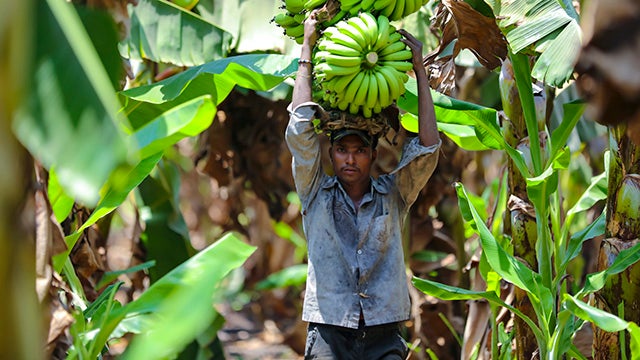Snigdha Poonam is a national affairs writer with the Hindustan Times. She will speak as part of the Seismic Shifts track at the Aspen Ideas Festival. Below she shares the challenges India faces in dealing with the aspirations of its growing young population.
More than half of India’s population is under 25 years old. It is the largest number of young people in any country on earth. A 2014 UN report distilled the meaning of India’s unprecedented demographic edge into the plainest possible words: “Never again is there likely to be such potential for economic and social progress. How we meet the needs and aspirations of young people will define our common future.”
The world’s future depends on young Indians meeting their aspirations, but right now it’s a pipe dream. As developmental economists have been warning for years, India needs urgently to take care of its ‘3E’ problem. The majority of India’s youth bulge falls into one of three categories: uneducated, unemployed, or unemployable. The country that is depending on its youth bulge to become a superpower hasn’t yet figured out how to turn these numbers into an asset.
The logistics of the challenge befuddle even the most hopeful of India cheerleaders. To call the shots in the global economy, India will need to educate about 100 million young people over the next ten years, a task never undertaken before. At least 1,000 universities and nearly 50,000 colleges will need to be built over this period. (To put things in context, the United States has a total of 4,200 colleges.) Even if the country magically achieves this feat, questions about the quality of education in these schools and colleges will persist.
At the moment, fewer than 17 percent of India’s graduates are immediately employable. Only 2.3 percent of the Indian workforce has undergone formal skill training (compared to 80 percent in Japan and 96 percent in South Korea). Nevertheless, they want jobs. To choose to be unemployed in India is a privilege few can afford. Yet the country is struggling to create employment for its young. Around 117 million people need to be absorbed into new and more productive jobs. The growing gap between jobs and job-seekers may lead to what the International Labour Organisation calls a “scarred generation.” It predicts that the collective frustration will spark protest movements and social instability. The slide has begun. Over the last three years, large sections of young Indians in many states have hit the streets rioting over job quotas. Things are going to get worse.
The majority of India’s youth bulge still lives in its backwaters. Seen one way, nothing about their lives is any different from that of their parents or grandparents at their age — from where they live to how they live. Shift perspectives slightly, and nothing is familiar. A twenty-year-old in Indore has access to the same information as someone his age in Iowa — and could very well have the same desires. They see no connection between where they live and what they want from their lives.
This is a generation of Indians hanging between extremes. They are hitting adulthood with the cultural values of their grandparents — socially conservative, sexually timid, god-fearing — but the life goals of American teenagers: money and fame. They have the bleakest chance at a real opportunity — one million Indians enter the job market every month while perhaps 0.01 percent find steady jobs — but the fanciest possible ideas about success. They are the most global young Indians ever, but with the narrowest ideas of what it means to be Indian, often based on language, region, religion, and an exaggerated notion of the country’s pre-colonial glories. A majority of them are frustrated with India’s old politics — synonymous in their minds with the Congress party’s stodgy, heavy-handed liberalism — but their idea of a new politics is that of the ruling Bharatiya Janata Party’s, one of exclusionary nationalism and sectarian division. This is the most desperate generation of Indians since Independence — 86 percent of them have been found to feel ‘anxious’ about their future — but also the one most bent on world domination. No matter how poorly placed they find themselves now, they make up the world’s largest ever cohort of like-minded young people, and they see absolutely no reason why the world shouldn’t run by their rules.
Consider this: Millions of Americans get their viral thrills — from sex confessions to life hacks — from Wittyfeed, one of the world’s fastest-growing content farms. Over a billion people follow it on Facebook alone. The only website of its kind visited by more people is Buzzfeed, the world leader in viral content. The website is run by a group of twenty-year-olds from a small town in central India. From behind their computers, these young Indians make decisions about what the world should know. How do they do it? By following Wittyfeed’s maxim: ‘It’s emotion that goes viral.’
Or this: Two out of three people in the world experience a tech support scam within a year, according to a 2016 survey by Microsoft. Americans lose approximately $1.5 billion to tech support scams annually. Most of them — 86 percent — originate in India. Once the hub for the global outsourcing industry, India is today the world leader in call-centre scams.
Thousands of young Indians work in con call-centres across big cities – Mumbai, Delhi, Kolkata, Ahmedabad – impersonating tax officers, loan agents, Microsoft executives or cut-rate Viagra manufacturers. Over months of navigating this vast network, I met dozens of current and previous call-centre scammers and asked them why they con vulnerable strangers all over the world. They gave me a range of justifications.
‘Americans complain of being scammed, but have they thought of people sitting on the other side of the call who sit around talking to them for hours for Rs 30,000 (about 445 USD) a month?’
‘Nothing seems wrong if you are getting a salary at the end of it’
‘Someone is paying you—it’s all that matters’
None as effective as the justification every scammer gives himself when torn between money and morality: as young people with no prospects, they are the biggest victims and the whole world is a scam.
What happens when 100 million people suddenly start dreaming big, in a place where no one — families, teachers, employers, governments — is prepared for it? They realise they are on their own. They reconcile themselves to the idea that they must build a world in which they can be what they want to be. A world where how well you do depends on how badly you want to do well. Once they have created this bubble of aspiration, they chase their dreams like their life depends on it — do or die. Young Indians are using their imagination to create economic, political and cultural options in the unlikeliest of spaces.
The consequences of young India’s determination for the rest of us (inside and outside India) won’t just be economic. The idea that only they can help themselves will lead this generation of Indians to redefine everything according to their perspective: work, success, morality. It will change our world in ways we can’t yet imagine.
The views and opinions of the author are her own and do not necessarily reflect those of the Aspen Institute.


